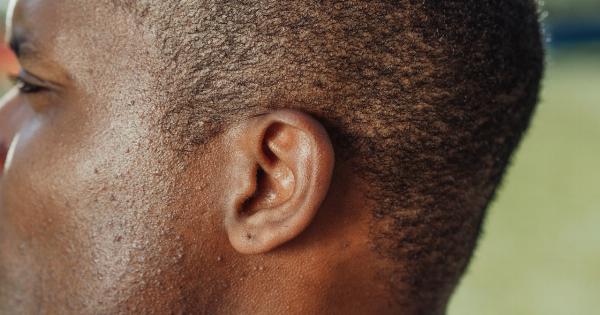Have you ever noticed that you can hear certain sounds better with your left ear than your right? This phenomenon has long puzzled researchers and scientists, as the human ears are typically symmetrical and should have equal hearing capabilities.
In this article, we will explore the mystery of the left ear’s greater hearing capacity and delve into the possible reasons behind this fascinating asymmetry.
Evolutionary Factors
One possible explanation for the left ear’s increased hearing capacity lies in evolutionary factors. Throughout history, humans have relied heavily on their sense of hearing for survival.
It is believed that our ancestors faced greater threats from predators approaching from their right side, making the left ear more attuned to potential danger. This hypothesis suggests that our ears have gradually evolved to prioritize the left ear’s hearing abilities.
Brain Hemisphere Dominance
Another theory proposes that the left ear’s greater hearing capacity is linked to brain hemisphere dominance. The human brain is divided into two hemispheres – the left and the right.
Each hemisphere processes sensory information from the opposite side of the body. It is suggested that the left hemisphere, which is responsible for language processing in most individuals, also plays a role in auditory processing.
As a result, the left ear may receive additional neural input, leading to increased hearing sensitivity.
Anatomical Differences
Anatomical differences between the ears could also provide insights into the mystery. The way sound waves enter our ears can differ due to variations in the shape and positioning of the ear structures.
Some research suggests that the left ear’s angle and shape may facilitate better sound capture and localization, ultimately leading to improved hearing capabilities. However, further studies are needed to uncover the specific anatomical factors that contribute to the left ear’s advantage.
Environmental Factors
Environmental factors and personal habits may also contribute to the left ear’s heightened hearing capacity.
Studies have shown that individuals tend to favor their right ear during phone conversations, possibly due to the phone’s placement or their dominant hand. This prolonged exposure to sound stimuli in the right ear could result in increased sensitivity and improved hearing abilities in the left ear.
Moreover, people may unknowingly protect their left ear more, for example by covering their right ear during loud noises, leading to enhanced hearing in the left ear.
Hearing Loss and Right Ear Bias
It is important to note that the left ear’s greater hearing capacity may not be a universal phenomenon.
Individuals with significant hearing loss in their right ear, either due to genetics or acquired conditions, may experience a compensatory increase in the left ear’s sensitivity. This can create the perception of a left ear bias in hearing capabilities. Additionally, right-handed individuals may unconsciously rely more on their dominant side, leading to the appearance of a left ear advantage.
Role of Attention and Perception
The left ear’s perceived advantage could also be influenced by attention and perception mechanisms in the brain. Studies have shown that humans tend to pay more attention to speech and sounds in their right visual field.
This bilateral processing preference might extend to auditory perception. As a result, sounds heard through the left ear may receive more attention and be perceived as clearer or louder, even if the actual hearing sensitivity does not differ significantly between the ears.
Implications in Language Processing
The left ear’s purported superiority in auditory processing has particular implications in language processing.
As language is primarily processed in the left hemisphere, the left ear’s advantage in capturing sound signals could facilitate better comprehension and communication. Furthermore, individuals with a left ear bias may have an increased ability to differentiate subtle nuances in tone and pitch, leading to improved musical perception and potential advantages in fields such as music or language learning.
Further Research and Conclusion
While a growing body of research has shed light on the mystery of the left ear’s greater hearing capacity, several questions still remain unanswered.
Future studies could examine more closely the interplay between brain hemisphere dominance, anatomical differences, and environmental factors to provide a comprehensive understanding of this intriguing phenomenon. Understanding the mechanisms behind this asymmetry could have far-reaching implications, ranging from audiology and speech therapy to the development of innovative hearing aids and technologies.






























